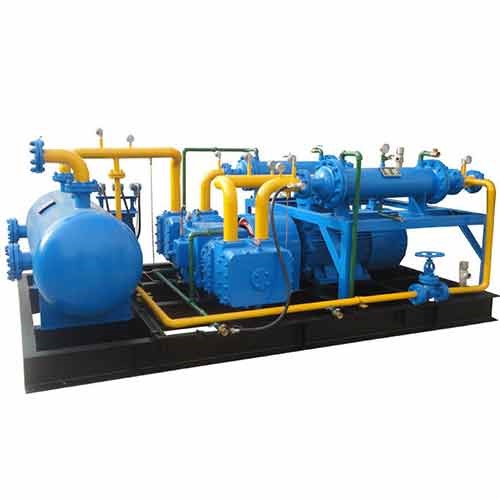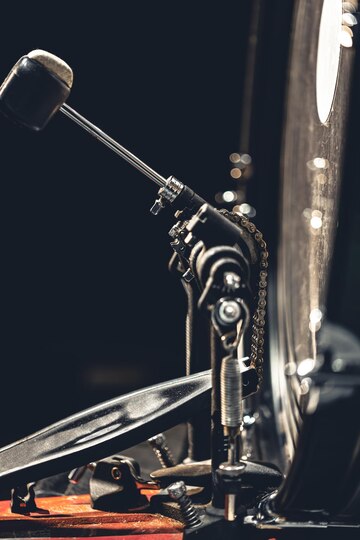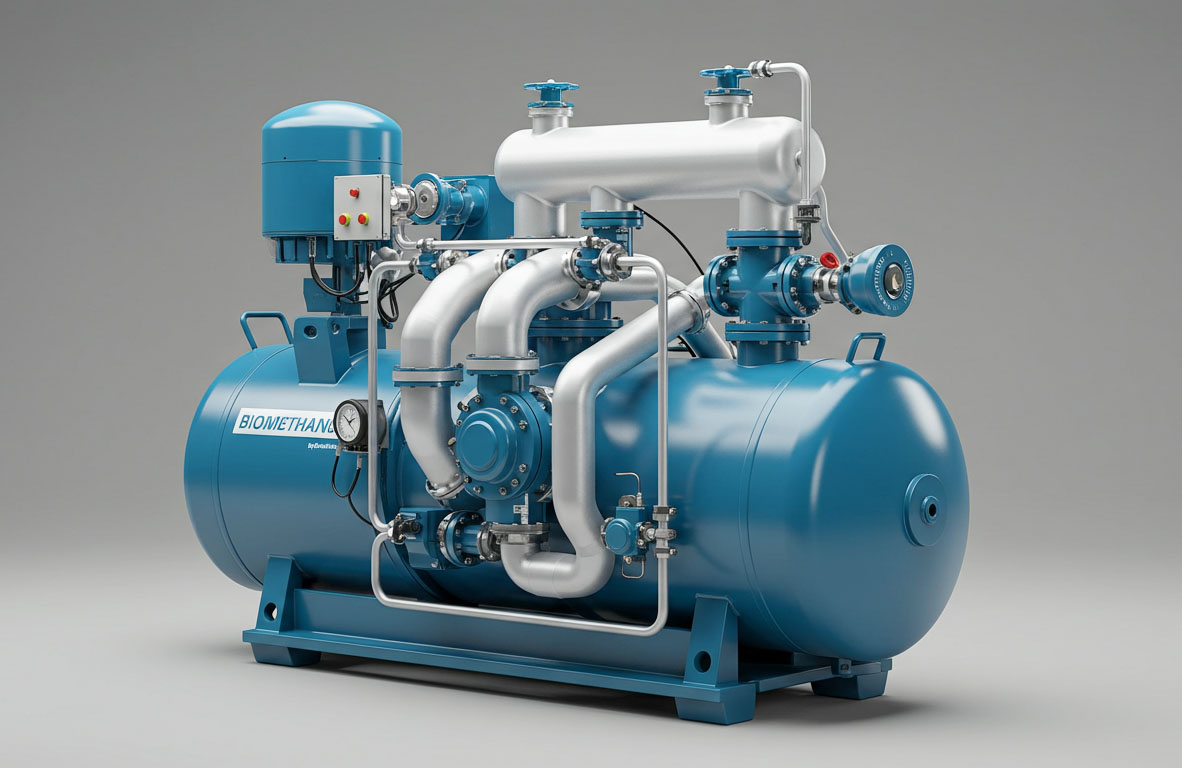Industrial Compressor Machine: A Comprehensive Guide to Understanding Its Functions and Applications
Industrial compressor machine is essential components in a wide range of industries and applications. These machines are used to compress air or gas, which is then stored in tanks or used to power pneumatic tools and machinery. They can be found in automotive manufacturing plants, oil refineries, construction sites, and more.

There are several types of industrial compressors available, each with its own unique features and benefits. The most common types include reciprocating compressors, rotary screw compressors, and centrifugal compressors. Reciprocating compressors use pistons to compress air, while rotary screw compressors use two interlocking rotors to compress air. Centrifugal compressors use high-speed impellers to compress air, making them ideal for large-scale industrial applications.
Key Takeaways
- Industrial compressor machines are used in a wide range of industries and applications to compress air or gas.
- There are several types of industrial compressors available, including reciprocating compressors, rotary screw compressors, and centrifugal compressors.
- Choosing the right type of industrial compressor depends on the specific application and requirements of the industry.
Types of Industrial Compressors
There are several types of industrial compressors available in the market, each with its unique features and benefits. The three most common types of industrial compressors are reciprocating compressors, rotary screw compressors, and centrifugal compressors.
Reciprocating Compressors
Reciprocating compressors are also known as piston compressors and are the most common type of compressor used in industrial settings. They work by compressing air through a piston that moves back and forth inside a cylinder. Reciprocating compressors are available in both single and multi-stage models and are suitable for low to medium pressure applications. They are ideal for use in small workshops, garages, and factories.
Rotary Screw Compressors
Rotary screw compressors are another type of industrial compressor that is widely used in various industrial applications. They work by compressing air between two helical screws that rotate inside a casing. Rotary screw compressors are more efficient and reliable than reciprocating compressors and are suitable for high-pressure applications. They are commonly used in large factories, manufacturing plants, and other industrial settings.
Centrifugal Compressors
Centrifugal compressors are the most powerful type of industrial compressor and are used in high-pressure applications. They work by using a rotating impeller to compress air and then discharge it through a diffuser. Centrifugal compressors are highly efficient and can produce a large volume of compressed air in a short time. They are commonly used in power plants, oil refineries, and chemical plants.
In conclusion, choosing the right type of industrial compressor depends on the specific application and requirements. Reciprocating compressors are ideal for low to medium pressure applications, while rotary screw compressors are suitable for high-pressure applications. Centrifugal compressors are the most powerful type of compressor and are used in high-pressure applications.
Components and Functionality
Industrial compressors are complex machines that perform a variety of functions. They are used to compress air and gas, which is then used for a wide range of applications. In this section, we will discuss the main components and functionality of an industrial compressor machine.
Compressor Motor
The compressor motor is the heart of the industrial compressor machine. It is responsible for driving the compressor pump, which compresses the air or gas. The motor is usually an electric motor, but it can also be powered by a diesel engine or a gas engine. The motor needs to be powerful enough to handle the load of the compressor pump and provide enough torque to start the pump.
Pressure Vessels
Pressure vessels are used to store the compressed air or gas. They are designed to withstand high pressure and are usually made of steel or aluminum. Pressure vessels are available in a variety of sizes and shapes, depending on the application. They are equipped with safety valves to prevent overpressure and are usually inspected regularly to ensure their safety.
Cooling Systems
Compressing air or gas generates heat, which can damage the compressor and the compressed air or gas. Therefore, industrial compressors are equipped with cooling systems to dissipate the heat. The cooling system can be air-cooled or water-cooled. Air-cooled systems use a fan to blow air over the compressor, while water-cooled systems use water to cool the compressor. The cooling system is an essential component of an industrial compressor machine and needs to be maintained regularly to ensure its proper functioning.
In summary, industrial compressors are complex machines that perform a variety of functions. They are made up of several components, including the compressor motor, pressure vessels, and cooling systems. Each of these components plays a critical role in the proper functioning of the compressor machine.
Applications and Uses
Industrial compressors are versatile machines that can be used in a wide range of applications and industries. Here are some of the most common uses of industrial compressors:
Manufacturing Processes
In manufacturing, compressed air is used to power tools and machinery, such as drills, grinders, and sanders. Compressed air is also used to control pneumatic systems that move materials and products along production lines. Additionally, compressed air can be used to paint, clean, and dry products and surfaces.
Refrigeration and HVAC
In refrigeration and HVAC systems, industrial compressors are used to compress refrigerant gases, which are then circulated through the system to cool or heat air. Compressed air is also used in the operation of air handlers, which move air through ducts and vents to regulate the temperature and humidity of indoor spaces.
Oil and Gas Industry
In the oil and gas industry, industrial compressors are used to move natural gas and other fluids through pipelines. Compressed air is also used in drilling operations to power pneumatic hammers and other tools. Additionally, industrial compressors are used to provide air for breathing in confined spaces, such as oil tanks and pipelines.
Overall, industrial compressors are essential machines in many industries, providing power, control, and safety in a variety of applications.
Maintenance and Safety

Industrial compressors are vital machines that require routine inspection, maintenance, and safety measures to ensure their safe and efficient operation. This section will discuss the routine inspection, operational safety, and troubleshooting of industrial compressors.
Routine Inspection
Routine inspection is essential to identify any potential problems and prevent them from becoming major issues. Industrial compressors require daily, weekly, monthly, and yearly maintenance checks to ensure their optimal operation. The following table outlines the routine inspection and maintenance schedule for industrial compressors.
| Maintenance Check | Frequency |
|---|---|
| Check oil level | Daily |
| Check for leaks | Daily |
| Check for unusual noises | Daily |
| Drain condensate from the air receiver tank | Weekly |
| Clean or replace air intake filters | Weekly |
| Check and tighten loose belts or pulleys | Monthly |
| Inspect hoses and connections for wear or leaks | Monthly |
| Inspect and clean the compressor’s cooling system | Yearly |
Operational Safety
Operational safety is crucial to prevent accidents and injuries in the workplace. Industrial compressors operate at high pressure and can be dangerous if not used correctly. The following safety measures should be followed when operating an industrial compressor:
- Wear appropriate personal protective equipment, such as safety glasses, gloves, and hearing protection.
- Never exceed the maximum pressure rating of the compressor.
- Never modify the compressor or its safety devices.
- Never touch the compressor or its components while it is running.
- Always use the correct air hose and fittings.
- Always shut off the compressor and bleed the pressure before performing any maintenance or repairs.
Troubleshooting
Despite routine inspection and maintenance, industrial compressors may experience problems. The following table outlines common problems and their possible causes and solutions.
| Problem | Possible Cause | Solution |
|---|---|---|
| Compressor won’t start | Power failure, faulty pressure switch, blown fuse | Check power supply, replace pressure switch or fuse |
| Compressor runs but doesn’t build pressure | Leaks, faulty valves, worn piston rings | Check for leaks, replace valves or piston rings |
| Compressor runs hot | Dirty air filters, low oil level, worn bearings | Clean or replace air filters, add oil, replace bearings |
| Compressor makes unusual noises | Loose components, worn bearings, faulty valves | Tighten loose components, replace bearings or valves |
In conclusion, routine inspection, operational safety, and troubleshooting are essential to ensure the safe and efficient operation of industrial compressors. By following the recommended maintenance schedule and safety measures, operators can prevent accidents, prolong the life of the compressor, and minimize downtime.


